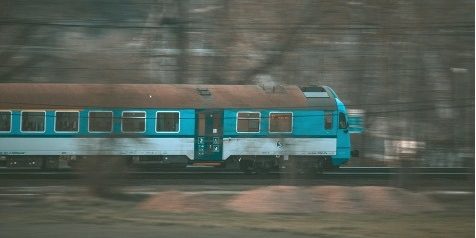From ferries to footpaths: The art of slow border crossings
Most people associate arriving in a new country with the sensation of stepping off a plane: the immediate rush of hot (or cold) air as you step onto the runway. But for centuries before air travel’s dominance, people made slower journeys by train, boat, and on foot. Even today, I’d argue there’s something special about crossing borders the old-fashioned way.
Now, going old-school doesn’t always mean sacrificing speed. Once restricted to 50 km/h, today’s passenger trains can cruise at over 300 km/h. Thanks to Europe’s extensive rail network, it’s entirely possible to visit five or six count-ries in as little as three weeks. And with tickets starting at €212, Interrailing remains the classic gap year option for those wanting to hit as many countries as possible in a short time.
But it’s on the slower trains that you get what air travel lacks: the opportunity to appreciate the landscapes you’re passing through
But it’s on the slower trains that you get what air travel lacks: the opportunity to appreciate the landscapes you’re passing through. On the UK’s ‘Deerstalker’ train, you can pull away from the lights of central London to pass by mountains, lochs, and moors. Arriving at the foot of Ben Nevis, you might even wake to the namesake herds of deer outside the window.
Or try Switzerland’s famous Bernina Express to Northern Italy, which often tops polls of the world’s most beautiful train journeys. Travelling at a leisurely 36 km/h, passengers are treated to views of glacier-tiped mountains, plunging ravines, and endless spruce forests.
For an even slower pace, why not travel by boat? Suspended between borders, watching a distant landmass approach, sea crossings make you appreciate the fact that you’re arriving literally in new lands. On journeys like the Cairnryan to Belfast ferry, lucky passengers can spot dolphins and even whales. Boat journeys are experiences in themselves, and routes like Italy to Spain, Greece to Italy, and Finland to Estonia are also covered by a standard Interrail ticket.
In today’s fast-paced world, be it a busy nine-to-five or an intense 10-week term at Warwick, travel shouldn’t add to the rush
For those truly seeking to slow down, travelling by foot is the ultimate option. As the landscape and the language slowly shift around you, crossings such as the dramatic Spain-to-France pass through the Pyrenees or the winding Chile-to-Argentina route through the Andes offer stunning surroundings. These can be physically challenging – the Spain to France route alone takes seven to ten days to complete.
But, more than by train or by boat, travelling by foot allows you to immerse yourself in the countries you’re traversing and truly appreciate the distance you have come. In today’s fast-paced world, be it a busy nine-to-five or an intense 10-week term at Warwick, travel shouldn’t add to the rush.
Visiting a new country should be about slowing down and savouring the experience, start to finish. And with the impact of air travel on an ever-warming planet, the slow border crossing is an art we may need to relearn.

Comments